Dental Crowns and Fillings
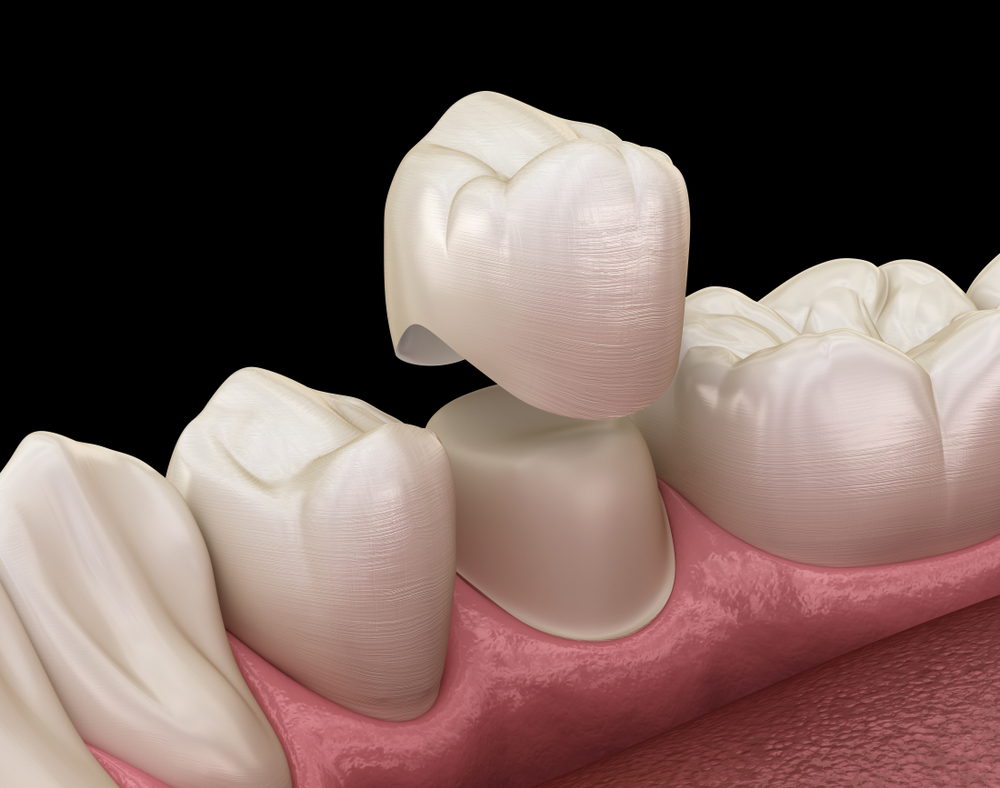
Dental crowns and fillings are essential dental treatments that play a vital role in restoring the normal function of damaged teeth and improving their aesthetic appearance. The importance of dental crowns and fillings lies in their ability to provide effective solutions to a wide range of dental problems, such as severe decay, fractures, and damage resulting from injuries. Thanks to these treatments, patients can regain their smiles with confidence and significantly improve their quality of life. Therefore, understanding these treatments and their importance is an important step towards maintaining overall oral and dental health.
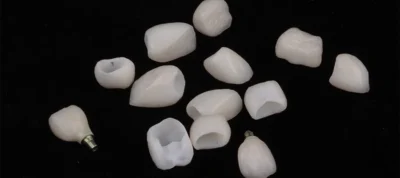
What are dental crowns?
Dental crowns are shells that are placed over a damaged tooth to completely cover it, enhancing its strength and protecting it from future damage. Crowns are made from different materials such as porcelain, zirconia, metals, or a combination of them, ensuring their durability and natural appearance. Dental crowns are used in cases where teeth are severely decayed, broken, or after root canal treatments, as they help restore the tooth's natural shape and improve its function.
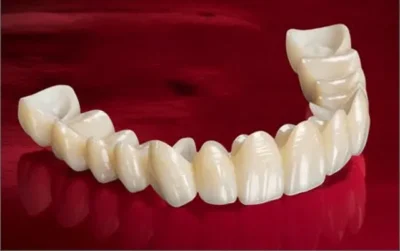
What are dental fillings?
Dental fillings, also known as fillings, are custom-made restorations that fill or cover damaged parts of a tooth. fillings are typically used when damage is too extensive to be treated with traditional fillings but do not require full coverage like a crown. fillings are made of materials such as porcelain or composite resin and provide a durable, strong solution to restore the shape and function of a damaged tooth.
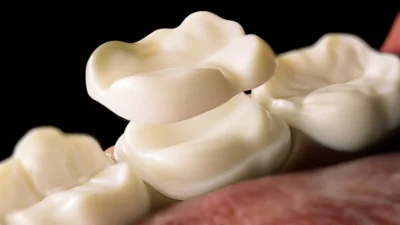
Types of materials used in the manufacture of dental crowns and fillings:
The materials used in the manufacture play a role. Dental Crowns and Fillings play a vital role in determining its durability, appearance, and function. Here's a look at the most prominent materials used:
- porcelain
Features:
It resembles the color and appearance of natural teeth, making it ideal for use on front teeth.
Resistant to stains and pigmentation.
Disadvantages:
Less durable than some other materials.
May break or crack under extreme pressure. - zirconia
Features:
Very strong material, resistant to breakage and corrosion.
They have a natural white color and can be shaped to match the color of the surrounding teeth.
Metal-free, reducing the risk of allergies.
Disadvantages:
It may be expensive compared to other materials.
Requires specialized equipment to install properly. - Gold and precious metals
Features:
High strength and durability, making it last for a long time without corrosion.
You need to remove less tooth enamel than other materials.
Disadvantages:
Its metallic appearance is not aesthetic, so it is usually used on back teeth that are not visible when smiling. - Porcelain fused to metal (PFM)
Features:
Combines the strength of metal with the beauty of porcelain, providing a good balance between durability and appearance.
Can be used all over the mouth, including back teeth that need extra strength.
Disadvantages:
A metallic line may appear at the base of the crown or crown over time.
Porcelain can wear or break, even if it is supported by metal. - Composite resin
Features:
Economical option compared to other materials
Can be easily shaped to match natural teeth.
Disadvantages:
Less durable than porcelain and zirconia, making them more susceptible to wear and breakage.
They may change color over time and need to be replaced more frequently. - Ceramics
Features:
Similar to porcelain in aesthetic appearance and natural color.
Resistant to pigmentation and stains
Disadvantages:
Can be less durable than zirconia and metals.
Prone to fracture under high pressure
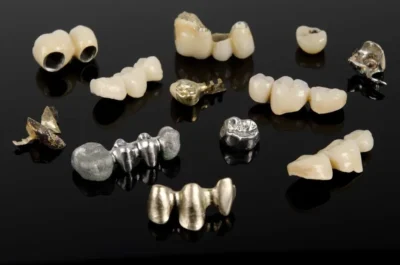
How can you choose the right material for making crowns and dental fillings?
The choice of the right material for making crowns and dental fillings depends on several factors, including:
- Tooth location: The front teeth require materials that look good, while the back teeth need strong and durable materials.
- The health status of the teeth and gums: The condition of the affected tooth and the surrounding tissues affects the choice of material.
- Patient preferences and budget: The materials vary in cost and appearance, which calls for a discussion of options with the doctor.
- Sensitivity to metals: Some patients may be allergic to metals, making non-metallic options like zirconia or ceramics more suitable.
A dentist can give appropriate recommendations based on these factors to ensure you get the best possible results in terms of durability and aesthetics.
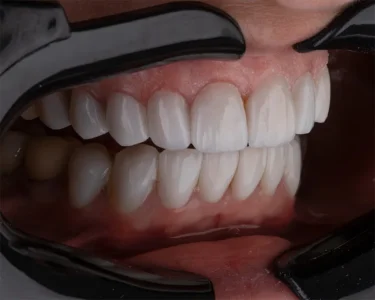
What are the indications for using dental crowns and fillings?
- severely damaged teeth:
When a tooth experiences severe decay that can't be fixed with a regular filling, or when a large part of the tooth is missing or broken. - Root canal treatment:
After a root canal treatment, the tooth becomes brittle and weak, and crowns are used to protect and strengthen it. - Cracked or broken teeth:
To protect cracked or broken teeth and prevent further breakage or damage. - Cosmetic dentistry:
To improve the appearance of crooked, discolored teeth, or teeth that are abnormally sized or shaped. - Bridge installation:
Crowns are used as supports to stabilize bridges that replace missing teeth. - Decayed teeth:
When teeth are worn down due to excessive grinding or biting on hard things, they need to be restored to their shape and function.
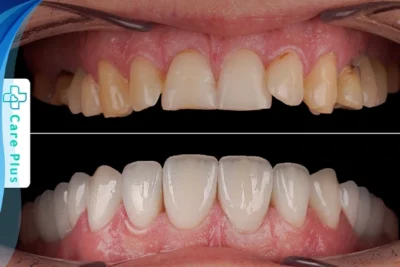
Mechanism of installing dental crowns and fillings:
Installing dental crowns and fillings requires several precise steps to ensure effective and long-lasting results. Here is how to install them in detail:
- Assessment and preparation:
Clinical examination: The dentist examines the damaged tooth and determines the need for a crown or filling placement.
X-rays: They are used to assess the condition of the root and the surrounding bone of the tooth.
Preparing the tooth: the damaged or decayed part of the tooth is removed and shaped to fit properly; this may require removing part of the tooth's enamel. - Taking measurements:
Dental impressions: Accurate molds of the prepared tooth are taken using special materials or digital imaging techniques.
Color selection: The color of dental crowns and fillings is selected to match the color of the adjacent teeth. - Crown or filling fabrication:
Dental Laboratory: The measurements and molds are sent to the laboratory where the fabrication occurs, while a temporary crown is placed to protect the tooth. - Final assembly:
Installation and fixation: After receiving the tooth in its final permanent shape, the temporary crown is removed, and the tooth is thoroughly cleaned. Then, dental crowns and fillings are fixed using special adhesive materials and adjusted to ensure a proper fit.
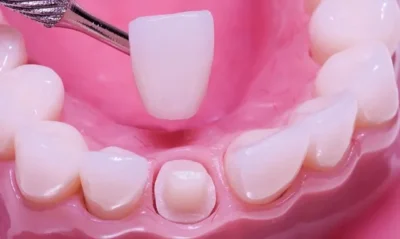
What is the lifespan of dental crowns and fillings?
Dental crowns and fillings are effective restorative treatments that help improve the health of damaged teeth and restore the beauty of the smile. The lifespan of dental crowns and fillings typically ranges between 10 to 15 years and sometimes can extend to 20 years or more, depending on several key factors. The type of material used in the crown plays a significant role; crowns made from gold or precious metals are often more durable compared to those made from porcelain or zirconia. Additionally, personal oral hygiene is a crucial factor in prolonging the life of the crown or filling.
Regular follow-up with your dentist also helps in early detection of any potential problems with the crown, allowing them to be treated quickly before they get worse. In these ways, dental crowns and fillings can be kept in good condition for a long time, ensuring you have a healthy and beautiful smile throughout the years.
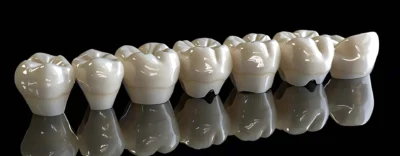
What are the benefits of installing dental crowns and fillings?
- Dental crowns and fillings help restore the teeth's ability to chew normally.
- Helps improve pronunciation and speech naturally.
- Crowns and fillings act as a protective covering that protects weak or damaged teeth from further wear or fracture.
- Crowns and fillings are designed to resemble the color and shape of natural teeth, helping to improve the appearance of your smile and make it more attractive.
- These formulations hide existing imperfections such as discoloration, cracks, and gaps between teeth.
- It contributes to preserving natural teeth instead of resorting to extracting them, which maintains the health of the mouth and teeth.
- Installing crowns and fillings helps prevent other problems that may arise as a result of leaving damaged teeth untreated.
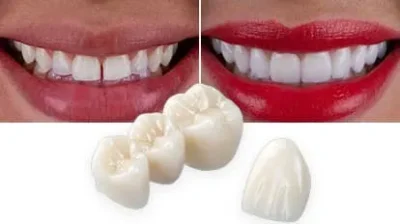
Do dental crowns and fillings cause bad breath?
Dental crowns and fillings themselves do not cause bad breath, but poor oral hygiene can allow bacteria and food to build up around them, causing an unpleasant odor. Leakage or gaps between the crown and the tooth can contribute to the problem if the fitting is not tight. Gum disease and decay under the crown or filling can also be causes of bad breath. Therefore, maintaining daily oral hygiene visiting your dentist regularly for checkups and proper fitting of crowns and fillings can help prevent this odor.

Care of dental crowns and fillings:
Dental crowns and fillings require special care to ensure their durability and oral health. Here are some tips:
- Brush twice daily with a soft toothbrush and fluoride toothpaste, and floss daily. An antibacterial mouthwash can be used to promote healthy gums.
- Avoid biting hard objects such as ice or pencils. If you grind your teeth while sleeping, use a night guard.
- See your dentist every 6 months to check and clean your crowns and fillings and make sure they are healthy.
- Pay attention to any changes such as pain or sensitivity around crowns and fillings, and if you feel any movement or looseness, see your dentist immediately.
- Avoid solid and sticky foods, and eat foods rich in vitamins and minerals.
By following these tips, you can keep your crowns and fillings for a long time and ensure your overall oral health.
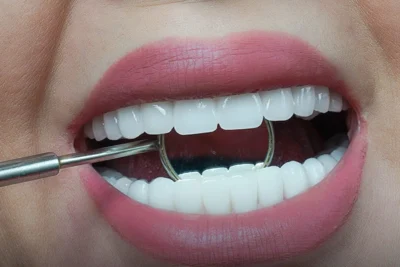
Finally:
In conclusion, dental crowns and fillings are very important in maintaining oral health and improving the appearance of teeth. Thanks to technological advances in dentistry, these treatments have become more effective and aesthetically pleasing, providing patients with long-term solutions to various dental problems. Dental crowns and fillings are not only a way to enhance the strength and natural function of teeth, but also to improve self-confidence and an attractive smile. With good oral health care and regular follow-up with your dentist, these restorations can last for many years, ensuring the health and beauty of your teeth in the long run.
Please enter your data correctly
We will contact you as soon as possible.

